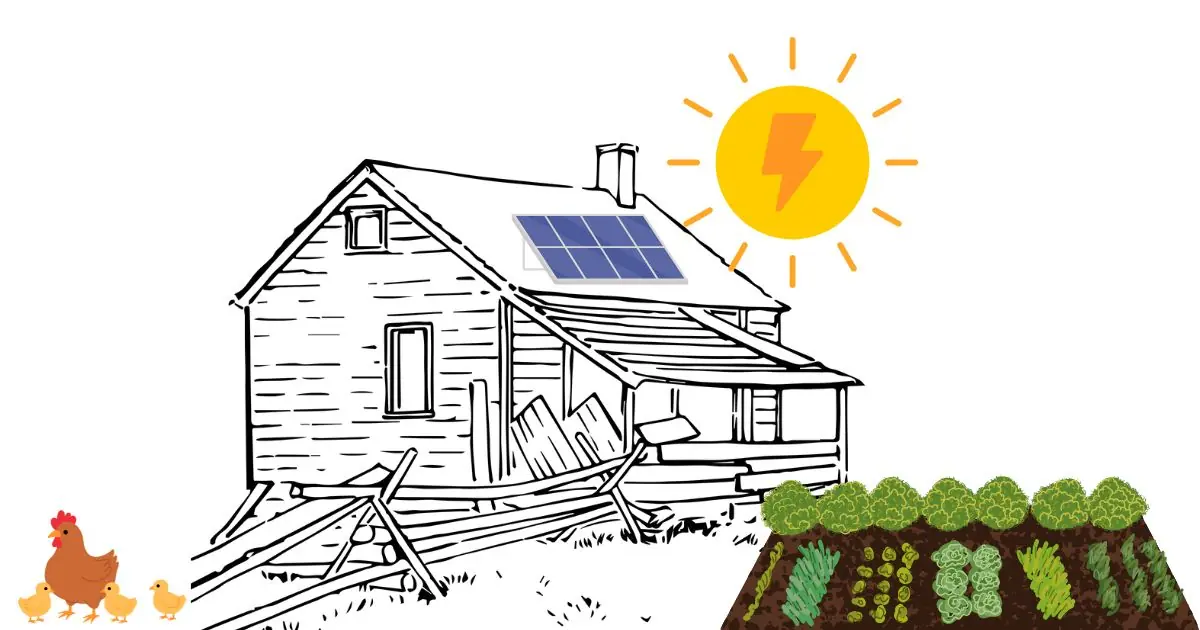Living a self-sufficient lifestyle often means finding ways to reduce reliance on outside systems. One of the most effective steps toward independence is installing solar panels to minimize or even eliminate monthly electricity bills. Solar energy not only lowers costs but also provides resilience during power outages and reduces environmental impact. This guide covers the benefits of solar, a step-by-step DIY installation process, and practical tips for sourcing materials with estimated pricing.
Why Solar for Homesteading?
- Energy Independence: Generate power without relying on the grid.
- Cost Savings: Reduce or eliminate monthly utility bills.
- Sustainability: Harness renewable energy and lower carbon footprint.
- Resilience: Maintain power during outages or emergencies.
Planning Your Solar Setup
Before purchasing equipment, determine your household’s energy needs. Review past electric bills to calculate average monthly kilowatt-hour (kWh) usage. This will help size the solar system correctly.
Key Considerations
- Location & Sunlight: Ensure your roof or property receives at least 4–6 hours of direct sunlight daily.
- Roof Condition: A sturdy, south-facing roof with minimal shading is ideal.
- System Size: A typical homestead may need a 5–10 kW system depending on energy use.
Materials and Estimated Costs
Below is a breakdown of common components for a DIY solar installation:
| Component | Description | Estimated Price Range (USD) | Where to Source |
| Solar Panels | Monocrystalline panels (high efficiency) | $150–$300 per 400W panel | Online retailers, local solar suppliers, wholesale distributors |
| Inverter | Converts DC power to AC for home use | $800–$2,000 | Solar equipment suppliers, Amazon, eBay |
| Charge Controller | Regulates power flow to batteries (if off-grid) | $200–$600 | Renewable energy stores, online |
| Battery Bank (optional) | Stores excess energy for off-grid use | $3,000–$8,000 depending on capacity | Lithium-ion or lead-acid battery suppliers |
| Mounting Hardware | Rails, brackets, and roof attachments | $300–$800 | Solar hardware suppliers, hardware stores |
| Wiring & Electrical Components | Cables, breakers, disconnects, conduit | $200–$600 | Electrical supply stores, Home Depot, Lowe’s |
| Permits & Inspection Fees | Required by local authorities | $100–$500 | Local building department |
Total DIY System Cost Estimate:
- Grid-tied 5 kW system: $6,000–$10,000
- Off-grid 5 kW system with batteries: $12,000–$18,000
Step-by-Step DIY Installation Guide
1. Design the System
- Calculate energy needs.
- Decide between grid-tied (cheaper, no batteries) or off-grid (independent, requires batteries).
- Create a wiring diagram.
2. Obtain Permits
- Contact local building authorities for solar installation requirements.
- Apply for electrical and structural permits.
3. Install Mounting System
- Secure rails or brackets to the roof rafters.
- Ensure proper tilt angle (usually 30–40° depending on latitude).
4. Mount Solar Panels
- Attach panels to the mounting system.
- Connect panels in series or parallel depending on voltage requirements.
5. Wire the System
- Run DC wiring from panels to the inverter or charge controller.
- Install disconnect switches and breakers for safety.
- Connect inverter to the home’s electrical panel (grid-tied) or battery bank (off-grid).
6. Inspection and Activation
- Schedule inspection with local authorities.
- Once approved, activate the system and monitor performance.
Tips for Success
- Buy in Bulk: Panels and hardware are cheaper when purchased in larger quantities.
- Check Rebates & Incentives: Many regions offer tax credits or rebates for solar installations.
- Start Small: Begin with a smaller system and expand as budget allows.
- Use Online Calculators: Tools can help estimate system size and savings.
Long-Term Benefits
- Reduced or eliminated electric bills.
- Increased property value.
- Greater independence and resilience for homesteading.
- Contribution to a sustainable lifestyle.
Conclusion
Adding solar power to a homestead is one of the most impactful steps toward self-sufficiency. With careful planning, sourcing affordable materials, and following a structured DIY approach, it’s possible to build a reliable solar system that pays for itself over time. Whether grid-tied or fully off-grid, solar energy empowers homesteaders to live more sustainably and independently.


